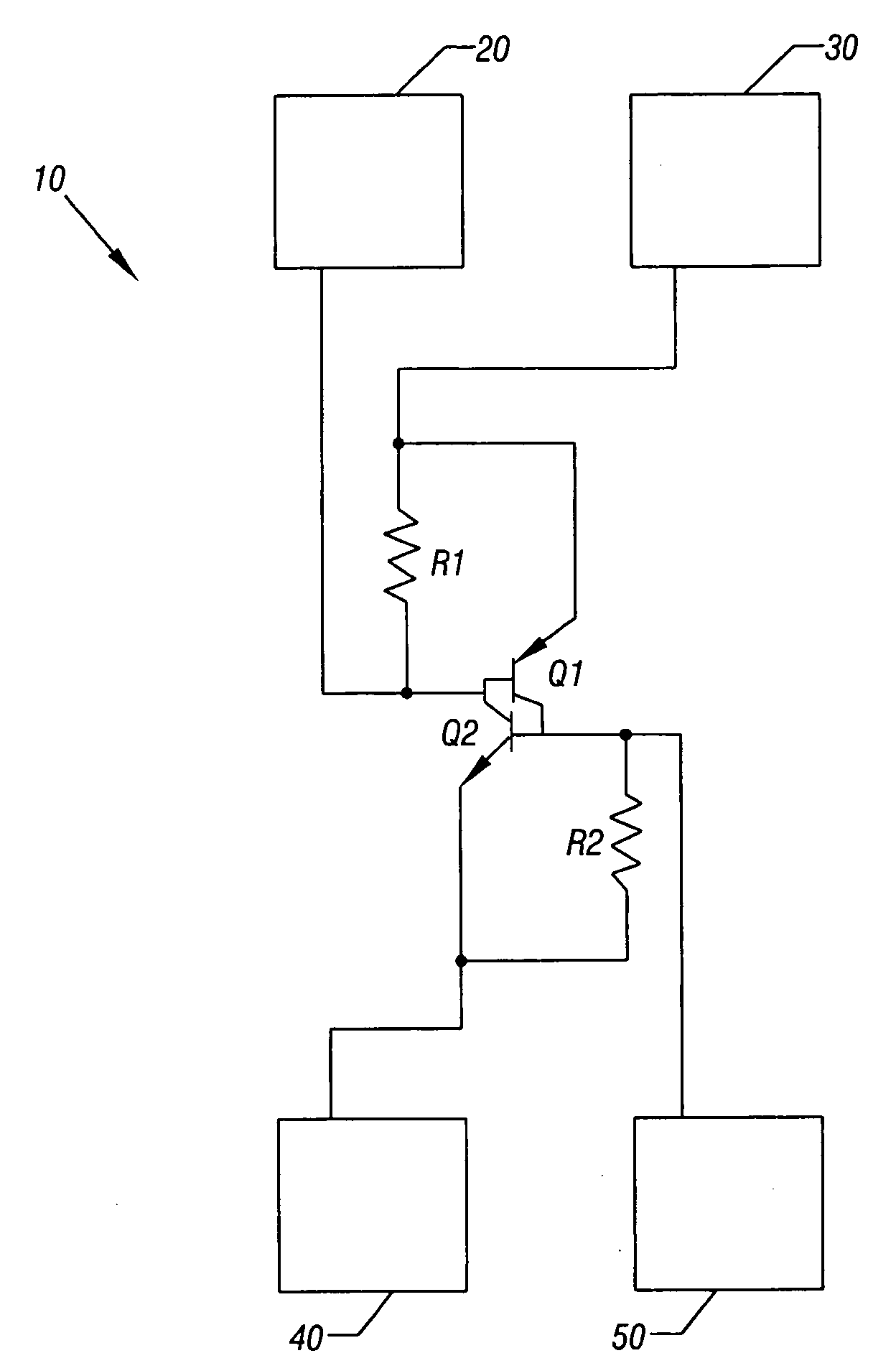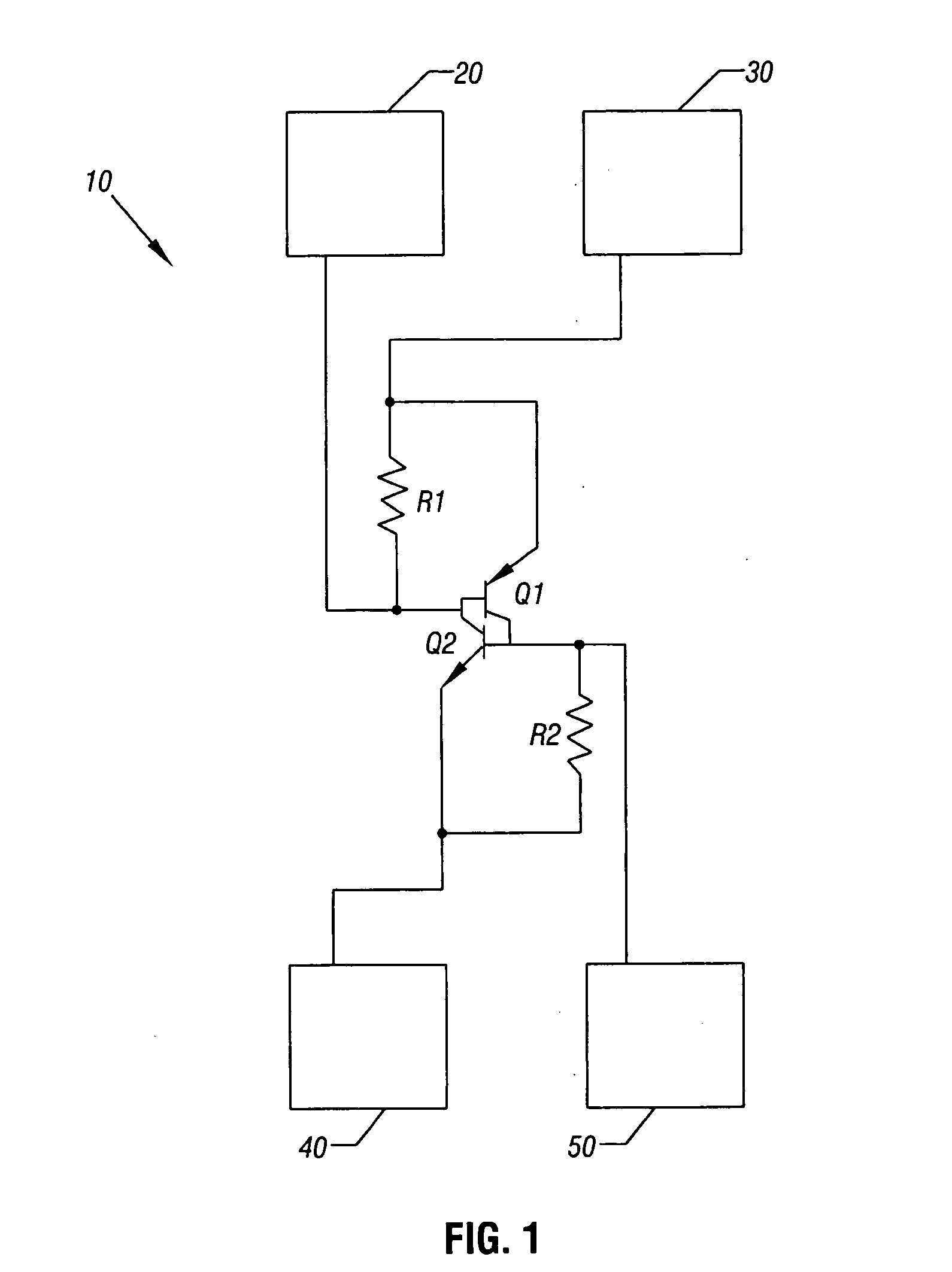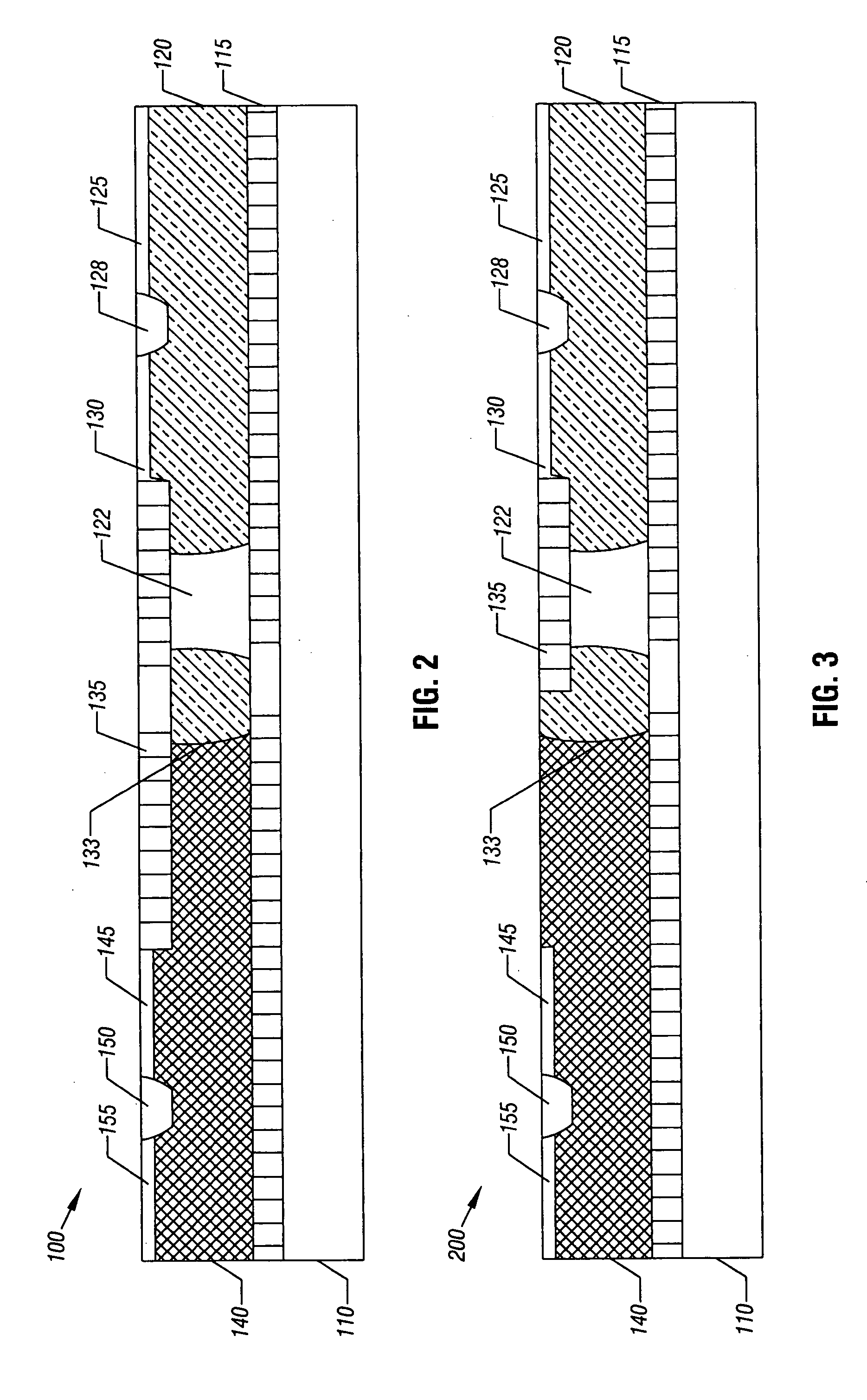Silicon controlled rectifier protection circuit
a rectifier protection and silicon technology, applied in the direction of basic electric elements, electrical equipment, semiconductor devices, etc., can solve the problems of large devices, scr cannot turn, and circuits such as telecommunication line card circuits are subject to harsh environments
- Summary
- Abstract
- Description
- Claims
- Application Information
AI Technical Summary
Benefits of technology
Problems solved by technology
Method used
Image
Examples
Embodiment Construction
[0016]Referring now to FIG. 1, shown is a schematic diagram of a SCR in accordance with an embodiment of the present invention. As shown in FIG. 1, SCR 10 is formed of two transistors, namely a first transistor Q1 and a second transistor Q2. As shown in FIG. 1, first transistor Q1 may be a bipolar transistor, more specifically a PNP-type bipolar transistor, while second transistor Q2 may be an NPN-type bipolar transistor. As shown, the emitter of transistor Q1 is coupled to a bond pad 30, which may be an input / output (I / O) pin. Furthermore, the emitter is coupled to one end of a bypass resistor R1, for example, a 100 ohm resistor in one embodiment. The base of transistor Q1 is coupled to the other end of resistor R1 and another bond pad 20.
[0017]Still referring to FIG. 1, the collector of transistor Q1 is connected via a common or shared diffusion to the base of transistor Q2 and is further coupled to a second bypass resistor R2, which may also be a 100 ohm resistor, in one embodime...
PUM
 Login to View More
Login to View More Abstract
Description
Claims
Application Information
 Login to View More
Login to View More - R&D
- Intellectual Property
- Life Sciences
- Materials
- Tech Scout
- Unparalleled Data Quality
- Higher Quality Content
- 60% Fewer Hallucinations
Browse by: Latest US Patents, China's latest patents, Technical Efficacy Thesaurus, Application Domain, Technology Topic, Popular Technical Reports.
© 2025 PatSnap. All rights reserved.Legal|Privacy policy|Modern Slavery Act Transparency Statement|Sitemap|About US| Contact US: help@patsnap.com



